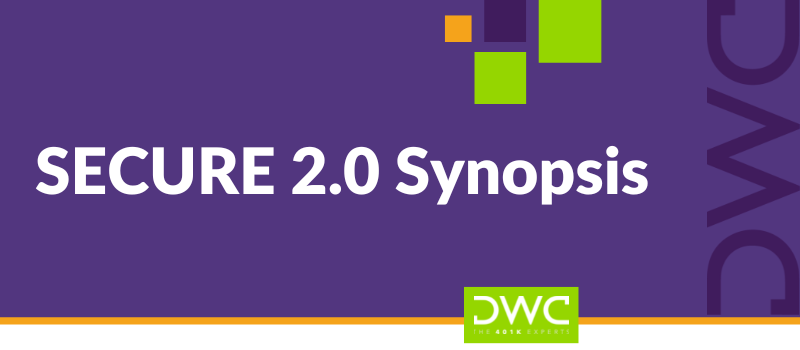401(k) or 403(b) : Tomāto, Tomäto?

The last few years have brought significant changes to the 403(b) world. The IRS' first update to the regulations in more than 40 years directly imposed new plan document and oversight requirements, and indirectly created renewed focus on the application of fiduciary standards to those who sponsor, manage, and provide services to 403(b) plans.
The Department of Labor took the debate one step further when it published Field Assistance Bulletin 2010-01, confirming that many (some would argue most or all) nongovernment, nonchurch 403(b) plans using only a single investment vendor are indeed subject to Title I of ERISA. While all of these developments mean that 403(b)s look and feel more like 401(k) plans than ever, there are still a number of features unique to the 403(b) plan that should not be overlooked.
Why would an organization choose a 403(b) plan instead of a 401(k) plan?
That is kind of a big question and one that is best answered through a series of additional questions. It depends on the specific circumstances of each organization. Some of the factors to consider are the goals of the organization, the types of contributions to be provided, and the type and number of employees to be covered.
As luck would have it, that is what this FAQ is all about. Read on.
Who can sponsor a 403(b) plan?
While most types of companies can sponsor qualified plans like 401(k) plans, only the following types of organizations can sponsor 403(b) plans:
- Not-for-profit organizations that are tax-exempt under Internal Revenue Code section 501(c)(3);
- Public educational organizations;
- A duly ordained, commissioned, or licensed minister of a church who is self-employed; and
- An organization that isn’t exempt under 501(c)(3) but shares a common religious bond with minister whom it employs.
Other types of entities are not permitted to sponsor 403(b) plans.
Am I required to offer the 403(b) plan to all employees of the organization?
This is one of the first key differences between 401(k) and 403(b) plans, and the answer varies based on the type of contributions we’re talking about.
Employee Deferrals
There is a special rule called the universal availability requirement that applies to 403(b) plans. In a nutshell, it says that with very few exceptions, anyone who is an employee must be eligible to make deferrals no matter how short a time they’ve worked for the organization. A 401(k) plan can, of course, impose eligibility requirements of up to one year of service and attainment of age 21, and can also exclude classes of employees assuming that the plan still passes the minimum coverage test.
Employer Contributions
401(k) and 403(b) plans are on a level playing field here. If the sponsor will make a match or nonelective contribution, a 403(b) plan can impose eligibility requirements similar to those available in a 401(k) plan as long as all employees are permitted to make salary deferrals.
Does that mean I cannot exclude any types of employees from making deferrals?
There are several limited exceptions. The following types of employees can be excluded from making salary deferrals:
- Non-resident aliens;
- Students;
- Employees who are scheduled to work fewer than 20 hours per week (must be included if actual work hours for a given year are at least 1,000); and
- Employees who are eligible to participate in another salary deferral plan (including a 457 plan) sponsored by the same employer.
There are several important things to note about these exclusions. First is that the exclusion must be written into the plan document in order for it to apply. Second is that if an employer elects to use one of these exclusions, then all employees in that category must be excluded. In other words, it would violate the universal availability requirement to exclude some students while including others.
What happens if I have excluded employees that should have been allowed to participate?
Usually, the correction is for the organization to make corrective contributions for the employees who were improperly excluded. The IRS has a correction program that spells out how to calculate these contributions, and DWC is available to assist you with the correction process.
How much can employees contribute to a 403(b) Plan?
This is another area where 401(k) and 403(b) plans are generally alike. The deferral limit is the same for both. For 2020, the limit is $19,500 per year, and those who are age 50 or older can make catch-up contributions of up to an additional $6,500 per year. These limits are indexed for inflation each year, and a chart showing the current and previous two year’s limits is available here.
Isn’t there a special type of extra catch-up contribution available in 403(b) Plans?
Certain types of organizations can offer a second type of catch-up contribution in their 403(b) plans. Here is how it works. Participants with at least 15 years of service whose average annual deferrals have been less than $5,000 are entitled to make special catch-up contributions of up to $3,000 per year. The aggregate "15-year catch-up" cannot exceed $15,000 for any participant.
This additional catch-up provision is only available to employers that are hospitals, educational institutions, home health services agencies, health and welfare agencies, and religious organizations. Furthermore, sponsors choosing to offer this additional catch-up must include the appropriate provisions in their plan documents.
Can a participant take advantage of both types of catch-up contributions in the same year?
Yes, but the IRS requires that an employee maximize his or her 15-year catch-up prior to making any age 50+ catch-up contributions.
Ok. What about employer contributions?
Again, 401(k) and 403(b) plans are on similar ground – both can allow for employer matching or nonelective (a/k/a profit sharing) contributions. Those contributions can follow a set formula, or they can be at the employer’s discretion. The maximum contribution limits are also generally the same.
There is one notable exception. Sponsors of 403(b) plans have the unique option to provide additional benefits to terminated participants. These post-severance nonelective contributions are based on compensation earned during the participant's most recent one-year period of full-time service. While subject to the regular annual additions limit, these special contributions can be made for up to five years immediately following a participant’s severance from employment.
You mentioned a plan document a few times. Does that mean 403(b) plans are required to have written plan documents like 401(k) plans?
Yes. The IRS issued regulations, effective in 2009, that made it clear for the first time that all 403(b) plans are required to maintain written plan documents regardless of whether or not other compliance rules apply. The deadline for existing 403(b) plans to have a document in place and executed was December 31, 2009; however, there was no formal process in place for the IRS to approve 403(b) documents, so there has been a general “good faith” compliance standard in place.
Fast forward to 2017, and that all changes with the creation of a pre-approved plan document program. Similar to 401(k) plans, there are now IRS-approved prototype and volume submitter documents available to 403(b) plans. All pre-existing plans have until April 30, 2020 to adopt one of these documents.
Um, I have a friend who wants to know what happens if a 403(b) sponsor doesn’t have or cannot find an existing plan document?
Have no fear. The IRS has a correction program that makes it easy to address this situation. Even though correcting this situation is relatively straight-forward, it is important to go through the process to get the IRS’ approval to avoid potential penalties down the road.
You referred to certain compliance rules that might not apply. Tell me more about that.
The Employee Retirement Income Security Act of 1974, known as ERISA, is one of the main laws that govern employee benefit plans. While most retirement plans are covered by that law, certain 403(b) plans are exempt if they meet any one of the following requirements:
- Government entities, e.g. public schools;
- Churches or church-controlled organizations, unless they make a special written election to be covered; and
- Organizations that have only limited involvement in facilitating the operation of the plan.
Plans that meet one of those requirements are exempt from ERISA and are, therefore, also exempt from nondiscrimination testing, Form 5500 filing, and other general fiduciary obligations.
Any plan that does not meet one of these criteria is covered by ERISA.
What does limited involvement mean?
This is a somewhat subjective standard; however, here are some examples of certain actions that clearly cross the line.
- Making matching or non-elective contributions;
- Approving loan or distribution requests; and
- Limiting the vendors or investment options from which employees can select.
Wait a minute! Are you saying that if a 403(b) plan sponsor limits the number of investment options available in the plan that it voids the ERISA exemption?
Well, we’re not saying that, but the Department of Labor did. Back in 2010, they published Field Assistance Bulletin 2010-01 to clarify the whole “limited involvement” concept. It provided that, “To meet the terms of the safe harbor, the arrangement generally must offer a choice of more than one 403(b) contractor and more than one investment product.”
Based on that, 403(b) plans that use only a single investment vendor do not meet the limited involvement standard and are, therefore, covered by ERISA unless they are either a church or a government entity.
Once a plan is covered by ERISA, maybe because it made an employer match in a previous year or limited investment options, can it ever become un-ERISAfied?
Nope. Once a plan is covered by ERISA, it is always covered.
Yikes! What happens if the plan is covered by ERISA?
In short, it means the plan must pass certain nondiscrimination tests and file a Form 5500 each year, just like a 401(k) plan. All of the fiduciary rules also apply.
There is more on each of these points to come.
Do 403(b) plans have to go through all the compliance testing each year like 401(k) plans?
As noted above, plans that are not covered by ERISA are also exempt from the nondiscrimination requirements. ERISA-covered plans are required to satisfy most of the nondiscrimination rules that apply to other plans.
One key exception is the ADP test that normally applies to salary deferrals. As a trade-off to the universal availability requirement (described above), 403(b) plans are not required to pass the ADP test. This allows any highly compensated employees to maximize their deferrals.
Plans that include employer contributions must pass the minimum coverage test and, in the case of matching contributions, the ACP test.
The top-heavy determination does not apply to 403(b) plans.
Do sponsors of 403(b) plans have to file Form 5500 each year?
Non-ERISA plans are not required to file, but ERISA-covered 403(b) plans are. The requirement to file Form 5500 is not new for ERISA 403(b) plans; however, new rules have greatly expanded the amount of information that must be reported. In the past, 403(b) sponsors had to complete only the first page of Form 5500, which includes the sponsor's and plan's basic identifying information. Beginning with the 2009 plan year, 403(b) sponsors must now file a full Form 5500 to include participant counts, financial statements, and all other schedules and attachments required for 401(k) plans.
Plans with more than 100 participants as of the first day of the plan year are also subject to the requirement to engage an independent qualified public accountant ("IQPA") to audit the plan and to file the auditor's report along with Form 5500.
Since the participant count includes those who are eligible but not contributing as well as terminated employees with remaining balances, the universal availability requirement (described above) means that any 403(b) sponsor with close to 100 employees may be required to have its plan audited. The cost of an audit can easily run into five figures, so organizations should watch their participant counts carefully and budget accordingly.
Do I have to be concerned with orphaned accounts of employees that left a long time ago?
Regardless of a participant’s current employment status, older plan accounts can be disregarded for both the participant count and financial statement reporting on Form 5500 if they meet all of the following requirements, which are taken directly from DOL Field Assistance Bulletin:
- The contract or account was issued to a current or former employee before January 1, 2009;
- The employer ceased to have any obligation to make current contributions (including salary reduction contributions), and in fact ceased making contributions to the contract or account before January 1, 2009;
- All of the rights and benefits under the contract or account are legally enforceable against the insurer or custodian by the individual owner of the contract or account without any involvement by the employer; and
- The individual owner of the contract is fully vested in the contract or account.
What should I do if I incorrectly thought my 403(b) plan was exempt from ERISA and have never done any testing or filed a Form 5500?
First, take a deep breath. You are in good company. We have worked with many organizations in that very situation.
The IRS and Department of Labor correction programs allow for the voluntary correction of these types of oversights, but both agencies tend to be a little less understanding if they discover the errors first.
Simply call or e-mail us, and we can talk you through the process of getting the testing and government filings up to date.
Are there any restrictions on the types of investments that can be offered in a 403(b) plan?
Yes. Generally speaking, 403(b) plans can only invest in a custodial account that holds SEC-registered mutual funds and/or an annuity contract. Certain church plans are also able to invest in retirement income accounts.
403(b) plans are generally prohibited from investing in individual stocks or bonds, collective investment funds and self-directed brokerage accounts.
So, back to the original question. Which is better – a 401(k) or 403(b)?
The short answer is that there is no definitive answer as to whether the 401(k) or the 403(b) outshines the other. It really depends on the how the plan will be used.
The limitations on terminations and mergers between 401(k) and 403(b) plans generally dictate that an organization maintaining a plan will usually continue with that same type of plan.
If a new plan will cover HCEs who wish to defer significantly more than the NHCEs and/or the employer wishes to allow for added benefits for older workers, the 403(b) plan may be the way to go. But, if participants want to utilize "alternative" investment options or the employer is looking to control participant counts, the 401(k) plan may be the best option. For a plan that has no HCEs, invests exclusively in mutual funds, and is either well over or well under 100 participants, it’s probably a toss-up.
How do I decide which one is right for my organization?
We’ve saved the easiest question for last. Contact DWC, of course.
For more information on retirement plan design, visit our Knowledge Center.












